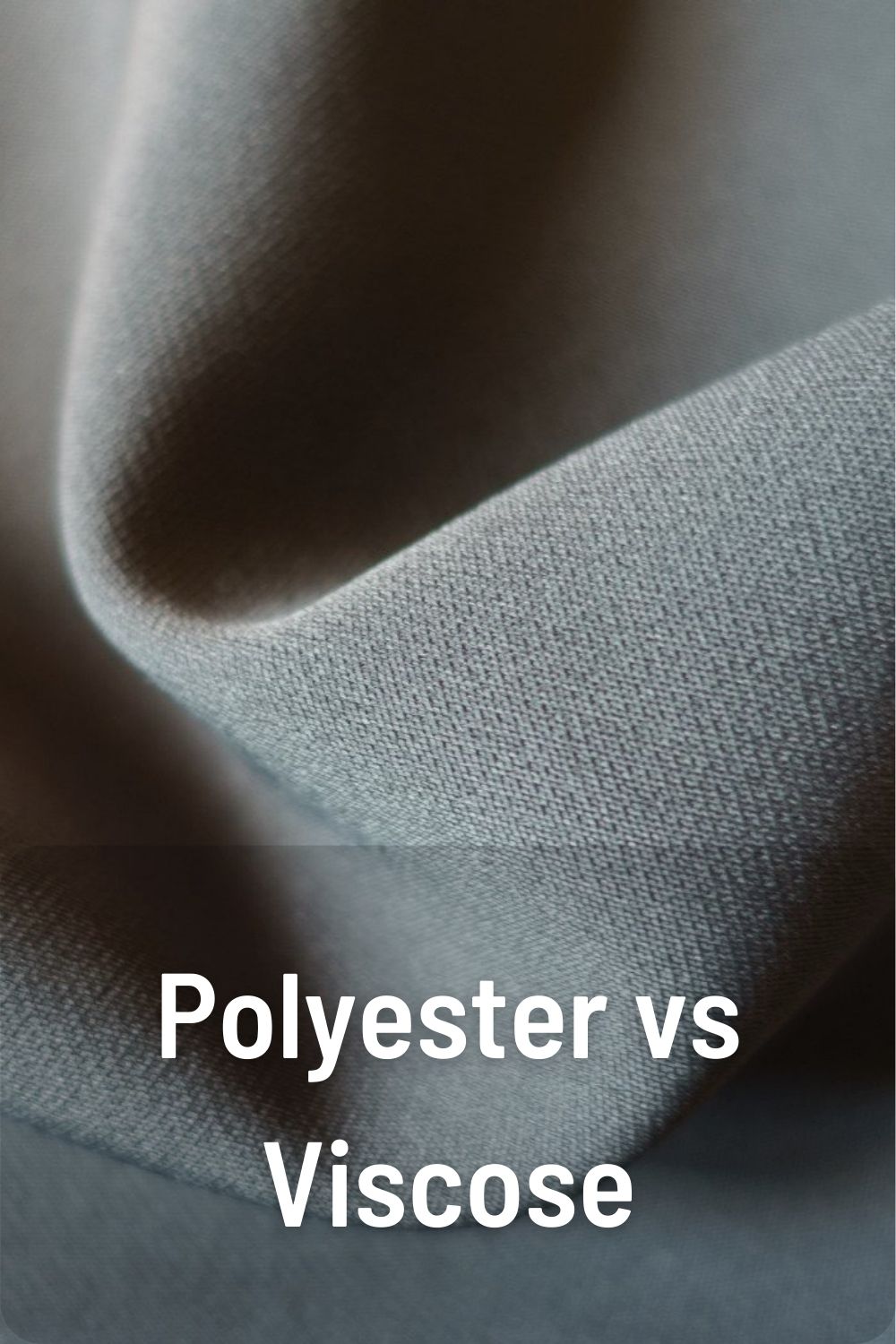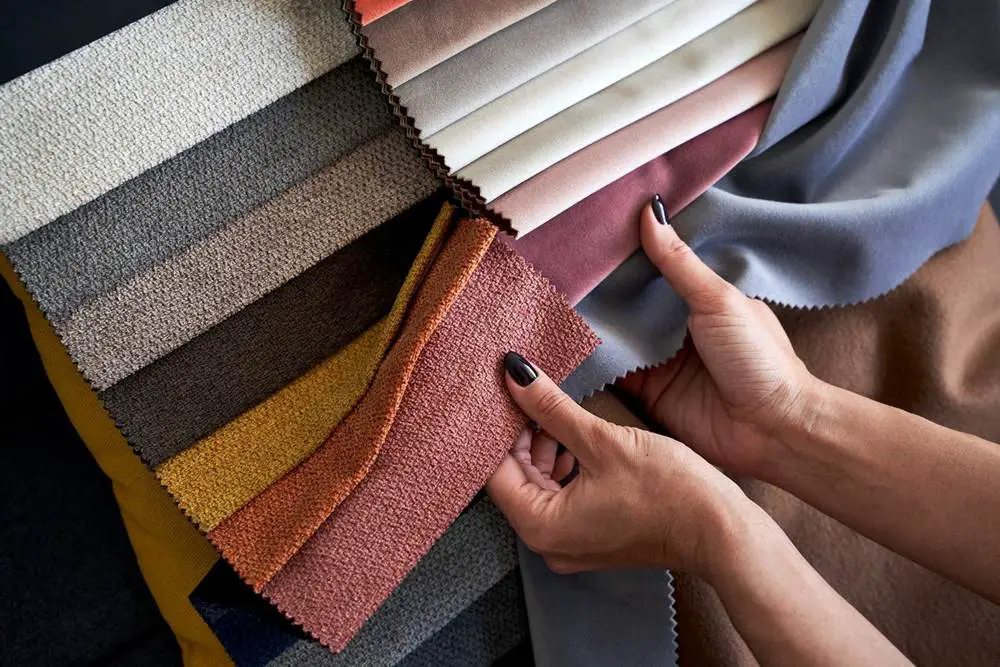
Polyester and viscose are both man-made fabrics that are commonly used in clothing and textiles. However, there are some notable differences between these two fabrics in terms of their properties, manufacturing process, sustainability, uses and care requirements. This article provides a detailed comparison of polyester and viscose to highlight the key similarities and differences.
Table of Contents
Overview of Polyester and Viscose Fabrics
Polyester is a synthetic polymer fabric made from petroleum-based chemicals. The monomers that make up polyester are extracted from crude oil through a chemical reaction between ethylene glycol and terephthalic acid. This liquid is then spun into polyester fibers that can be woven or knitted into fabric.
Viscose is a regenerated cellulose fiber made from wood pulp or cotton. The cellulose pulp is treated with chemicals to produce viscose liquid that is then spun into viscose fibers. Unlike polyester, viscose is derived from natural materials, not petrochemicals. However, the manufacturing process does use harsh chemicals.
Both polyester and viscose fabrics are valued for their durability, wrinkle resistance, shape retention and washability. However, there are some notable differences between the two in terms of sustainability, cost, comfort, drape and appearance.
Differences Between Polyester and Viscose
Manufacturing Process
- Polyester is made from petrochemicals in a completely synthetic process. The raw materials are derived from non-renewable crude oil.
- Viscose starts with renewable, plant-based cellulose from trees or cotton. However, the manufacturing process uses toxic chemicals and generates hazardous waste.
Sustainability
- Polyester is generally considered less eco-friendly because it is made from petrochemicals and doesn’t biodegrade. Recycled polyester is a more sustainable option.
- Viscose has a mixed sustainability reputation. While it starts from a renewable resource, the chemical processing has heavy environmental impacts. Some viscose is now made in closed-loop systems that recapture and reuse chemicals.
Cost
- Polyester tends to be the cheaper option between the two fabrics. It costs less to manufacture polyester on a large scale from petrochemicals.
- Viscose is typically more expensive than polyester, due to the higher cost of processing cellulose pulp into viscose fibers. However, it is still cheaper than natural silk.
Comfort and Feel
- Polyester tends to feel more stiff and synthetic compared to natural fabrics. However, microfiber polyester can be very soft.
- Viscose has a silkier feel and drapes similarly to rayon or natural silk. It is very smooth, soft and comfortable against skin.
Appearance
- Polyester has a shiny, synthetic appearance. It is wrinkle-resistant but can pill easily.
- Viscose has a smooth, luxurious drape and sheen resembling silk. It resists pilling but is prone to wrinkling.
Uses in Fashion
- Polyester is widely used in activewear for moisture-wicking properties. It is also blended with other fibers like cotton for added durability.
- Viscose is popular in dresses, blouses, loungewear and lingerie for its silky texture and fluid drape. It creates flattering fits.
Care Requirements
- Polyester is machine washable and dryable. It is resistant to shrinkage and wrinkling. However, heat can damage polyester.
- Viscose requires gentler washing by hand or delicate cycle. It needs to be laid flat or hung to dry to prevent wrinkling and shrinking.
Breathability and Absorbency
- Polyester does not absorb moisture well, so it can feel hot. However, moisture-wicking polyester fabrics pull sweat away from the body.
- Viscose is very breathable and more absorbent than polyester, so it feels cooler against skin. However, it dries slowly.
Durability and Wrinkle Resistance
- Polyester is known for its durability and wrinkle resistance. It retains its shape well after washing and wearing.
- Viscose tends to lose its shape and wrinkle easily. It is less durable than polyester over time.
Strength and Elasticity
- Polyester has high tenacity and elastic recovery, so it is resistant to stretching out. This makes it useful in athletic wear.
- Viscose has low elasticity so stretched-out garments do not “bounce back.” It is prone to sagging, bagging and losing shape.
###Reaction to Heat
- Polyester is heat-sensitive. Exposure to high heat can damage, shrink or melt the synthetic fibers.
- Viscose also shrinks at high temperatures, but withstands heat better than other cellulosic fibers like rayon. Using a cool iron prevents viscose shrinkage.
Polyester vs Viscose: Comparison Chart
| Property | Polyester | Viscose |
|---|---|---|
| Manufacturing Process | Made from petrochemicals | Made from regenerated cellulose |
| Sustainability | Not biodegradable, recyclable | Uses toxic chemicals, some eco-friendly versions available |
| Cost | Cheaper | More expensive |
| Feel and Texture | Stiff, synthetic feel | Smooth, silky feel |
| Appearance | Shiny, wrinkle-resistant, pills easily | Luxurious drape, prone to wrinkles |
| Uses | Athleticwear, blends | Dresses, blouses, loungewear |
| Care | Machine wash, dry | Hand wash or delicate cycle, lay flat to dry |
| Breathability | Not very breathable | More breathable |
| Absorbency | Does not absorb moisture well | Absorbs moisture better than polyester |
| Durability | Very durable | Less durable over time |
| Wrinkle Resistance | Excellent | Poor, wrinkles easily |
| Elasticity | High elastic recovery | Low elasticity, prone to stretching |
| Heat Tolerance | Damaged by high heat | Shrinks at high heat but better tolerance than rayon |
When to Choose Polyester vs Viscose

Polyester is Better For:
- Activewear and athletic clothing
- Outerwear and coats
- Workout gear like base layers
- Weather-resistant clothing
- Wrinkle-free shirts and blouses
- Formal suits and business attire
- School uniforms
- Upholstery and outdoor furniture fabrics
Viscose is Better For:
- Dresses, skirts, blouses
- Lingerie and slips
- Loungewear like robes
- Lightweight suits and business wear
- Fashionable button-down shirts
- Flowy pants and wide leg culottes
- Scarves, ties, and accessories
- Bedsheets and duvet covers
Conclusion
Polyester and viscose are both versatile, affordable man-made fibers used widely in clothing and home textiles. While they share some similarities, polyester and viscose have distinct differences when it comes to their manufacturing process, sustainability, cost, comfort, appearance and performance.
Polyester is valued for its wrinkle resistance, shape retention and durability. It excels in athleticwear and outerwear. Viscose has a luxurious silk-like drape and sheen that suits dresses, blouses, robes and lingerie. However, it wrinkles easily. Understanding the unique properties of these two fabrics allows consumers to select the right material for their needs. With both polyester and viscose, look for eco-friendly manufacturing processes for the most sustainable options.
Frequently Asked Questions
Q: Is polyester or viscose more breathable?
A: Viscose is more breathable and absorbent than polyester. The natural fiber origins of viscose make it better at absorbing moisture and allowing air flow through the fabric. Polyester’s synthetic fibers have poor moisture wicking.
Q: Which fabric pills more, polyester or viscose?
A: Polyester is prone to pilling, where small fiber balls form on the fabric surface. The short polyester fibers tend to cling together. Viscose has a smooth, silk-like texture that resists pilling.
Q: Can you machine wash viscose?
A: Viscose can be hand washed or washed on a delicate cycle in cold water. Tumble drying should be avoided, as heat damages viscose. It’s best to lay flat or hang viscose garments to dry.
Q: Is viscose ethical and sustainable?
A: Some viscose production involves clear-cutting forests and toxic chemicals that pollute waterways. Look for viscose certified by Canopy’s Eco Fashion Audit that ensures sustainable forestry. Lyocell and Tencel are eco-friendly types of viscose.
Q: What is viscose made of?
A: Viscose starts as cellulose from renewable sources like trees, cotton linters or bamboo. It is chemically processed into a silk-like fabric. Modern lyocell and Tencel viscose minimize the use of toxic chemicals.